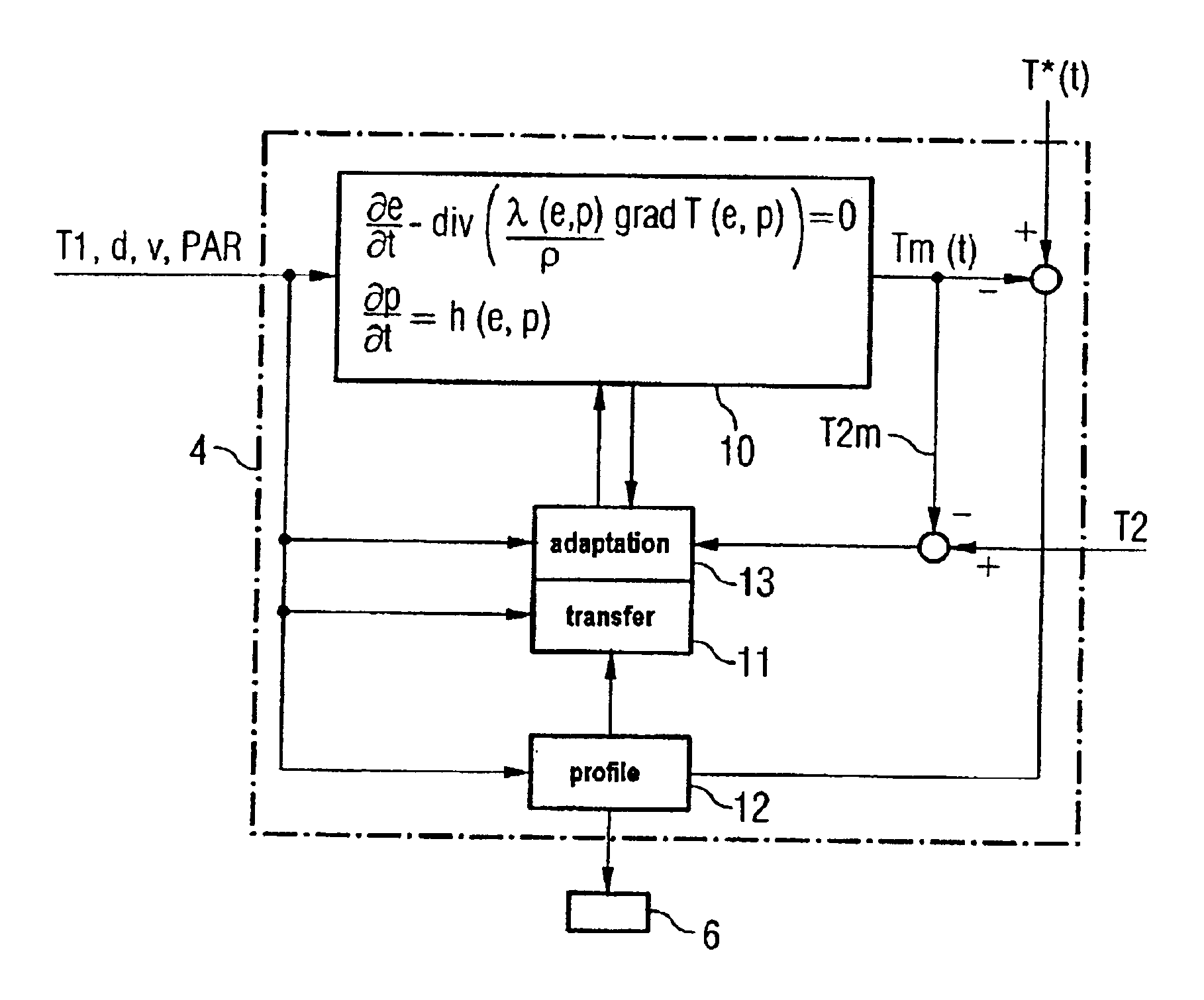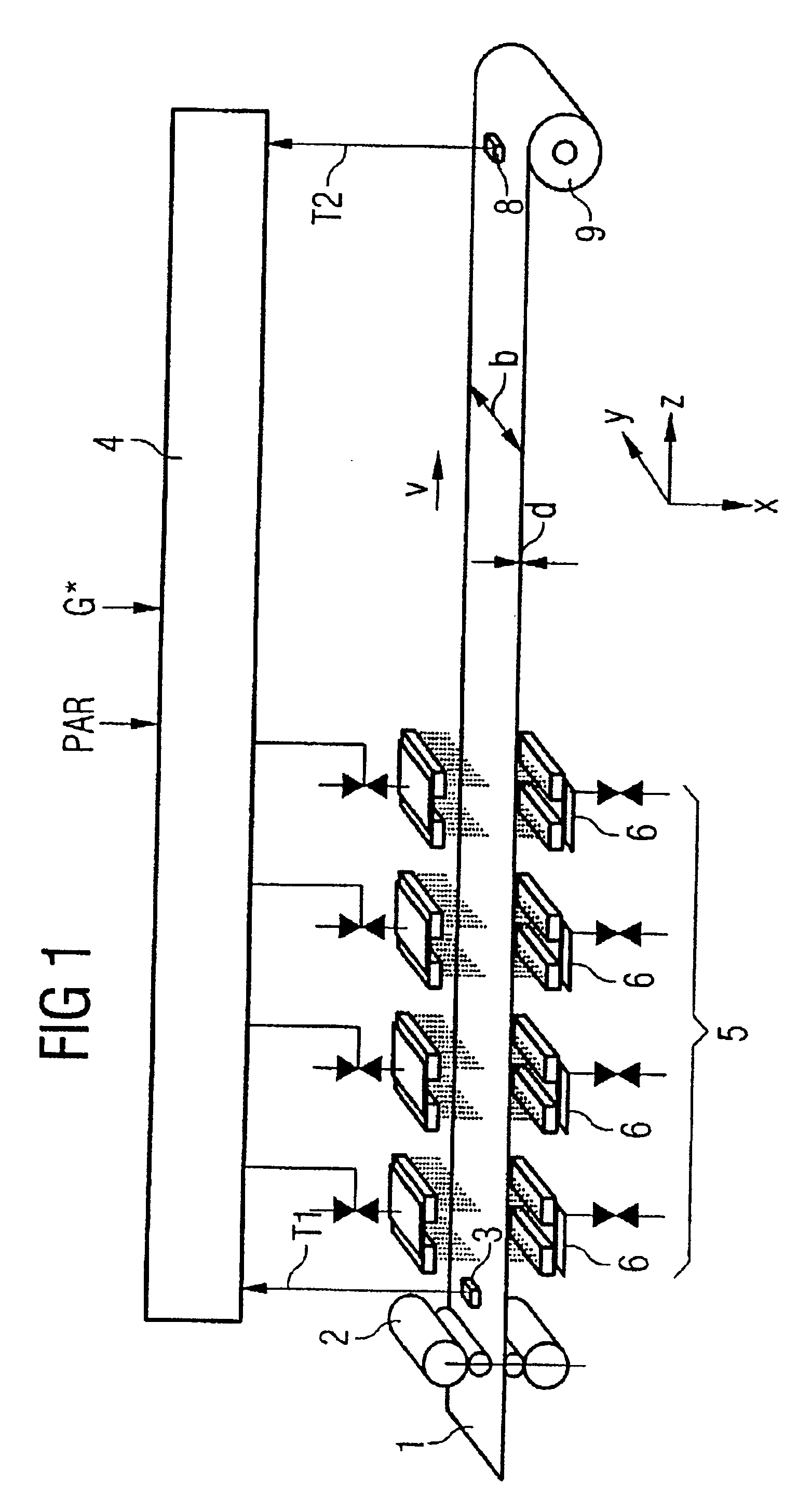Method for cooling a hot-rolled material and corresponding cooling-line models
- Summary
- Abstract
- Description
- Claims
- Application Information
AI Technical Summary
Benefits of technology
Problems solved by technology
Method used
Image
Examples
Embodiment Construction
As shown in FIG. 1, a hot-rolled material 1 runs out of a rolling stand 2 in a strip running direction z and at a rolling speed v. Downstream of the rolling stand 2 there is a rolling-stand temperature-measuring point 3. In the rolling-stand temperature-measuring point 3, a starting temperature T1 for a rolled-material location is recorded at the surface of the rolled material 1 and is fed to a cooling-line model 4 as an input parameter.
In accordance with FIG. 1, the rolled material 1 is a metal strip, e.g. a steel strip. Therefore, in the width direction y, it has a rolled-material width b and, in a thickness direction x, a rolled-material thickness d. Rolled-material width b and rolled-material thickness d together result in the rolled-material cross section of the rolled material 1.
The starting temperature T1 of the rolled material 1 may vary transversely across the strip width b. The rolled-material temperature-measuring point 3 is therefore preferably designed in such a manner ...
PUM
| Property | Measurement | Unit |
|---|---|---|
| Temperature | aaaaa | aaaaa |
| Density | aaaaa | aaaaa |
| Phase | aaaaa | aaaaa |
Abstract
Description
Claims
Application Information
 Login to View More
Login to View More - R&D
- Intellectual Property
- Life Sciences
- Materials
- Tech Scout
- Unparalleled Data Quality
- Higher Quality Content
- 60% Fewer Hallucinations
Browse by: Latest US Patents, China's latest patents, Technical Efficacy Thesaurus, Application Domain, Technology Topic, Popular Technical Reports.
© 2025 PatSnap. All rights reserved.Legal|Privacy policy|Modern Slavery Act Transparency Statement|Sitemap|About US| Contact US: help@patsnap.com



